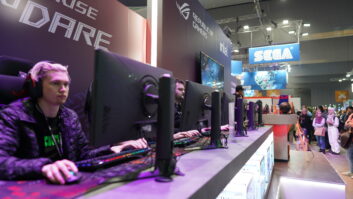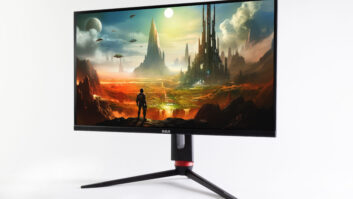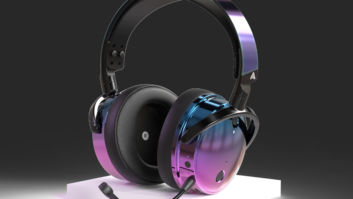Cellphones will offer up some stiff competition to dedicated MP3 players for consumers who want to listen to music on the go, according to ABI Research and the Yankee Group.
Sales of cellphone-based games will also grow dramatically by the end of the decade, the Yankee study found, but their sales will complement rather than compete with dedicated handheld game devices such as Sony’s PSP and the Nintendo DS. Cellphone games, Yankee found, appeal largely to casual Internet gamers and females, not to console gamers or CD-ROM gamers, who are predominantly male.
In a recent portable entertainment study, the Yankee Group concludes that the installed base of music-centric and music-storing cellphones will outnumber dedicated MP3 players for the first time in 2009. That year, the company forecasts that one half of all portable music players in use will be phone hybrids. “There is no hardware or software barrier to a killer music experience on a cellular handset,” Yankee said.
As a result, Yankee senior analyst Mike Goodman told TWICE, about 20 million to 25 million of the 65 million music-enabled cellphones in consumer hands in 2009 will be used as the consumer’s primary portable music device. “Cellphones will account for about 20 percent of the installed base of portable digital music listeners,” he added. “It comes down to convenience.”
It also will come down to timing. By 2008, dedicated MP3 player sales will begin to level off because of market maturity, and replacement sales will account for a large percentage of MP3 sales, he said. As many existing MP3 users begin to replace their MP3 players, many will opt for MP3-playing cellphones with lots of memory capacity, he continued. By 2009 or 2010, “it’s easy to see cellphones with 15GB to 30GB of flash memory,” Goodman noted.
Yankee believes the potential consumer base for MP3 portables is about 70 million people, and by 2009, the installed base of dedicated MP3 players will already hit around 65 million.
During this period, most consumers will use their MP3 phones to play music transferred from their PC, with over-the-air music downloads to cellphones accounting for only 11 percent of total U.S. music-download revenue in 2009, Yankee also pointed out. “Dedicated digital audio devices will continue to be used more exclusively for their single purpose, while multifunctional handsets, including music-capable phones, will be used for a multitude of purposes and will therefore drive a smaller proportion of [music-download] revenue,” Yankee explained.
For its part, ABI Research contended that mobile phones with tiny hard-disk drives “may soon allow the cellular handset to rival or surpass the portable MP3 player as the mass-market mobile music device of choice.” Said ABI analyst Alan Varghese, “As the cellular handset becomes the one device that the world carries, the stand-alone MP3 player may well be left behind. What’s important to many users is having one device that handles mobile music as well as the other functions — phone calls, digital photography, e-mail, Web browsing — now performed by mobile phones.”
Most MP3 users, ABI said, load MP3 players mainly with music from their own music collections, not downloaded from authorized Web sites, and high-capacity MP3 phones will “provide users the flexibility of listening of listening to those tracks on a device that’s almost always with them.”
As mobile phones morph into multimedia entertainment and computing devices, at least two phones available overseas — the Nokia N91 and Samsung SGH-i310 — sport HDDs with capacities of 4GB and 8GB, respectively. Dedicated MP3 players still deliver greater capacity up to 30GB and 60GB, but “there is a point of diminishing returns beyond which a user doesn’t care whether the device can store 2,000 songs or 7,500,” Varghese pointed out. “MP3 player vendors may try to defend themselves by offering even greater disk space, but over time they may still lose market share.”
Neither phone is available in the United States, but the Nokia model is expected here in the second quarter at an approximate $400 to $700, a spokesman said. It plays MP3, AAC and eAAC+ music files.
In its study, Yankee said almost 100 percent of smartphones sold in 2006 will support full-track music storage, although smartphones will account for only 7 percent of unit handset sales. Feature phones in the $49-$99 price range “are rapidly incorporating support for full-track audio storage and playback,” Yankee added. In 2009, 42 percent of all phones sold in the United States “will offer substantive support for music,” Yankee concluded.
In 2005, the installed base of dedicated digital audio players hit 33 million, compared with the installed base of 12.5 million. By 2009, the number of music-phone owners will hit 65.4 million, exceeding the 64.9 million installed base of dedicated music players. In 2010, the installed base
U.S. Handheld Entertainment Outlook
(Installed base, in thousands)













